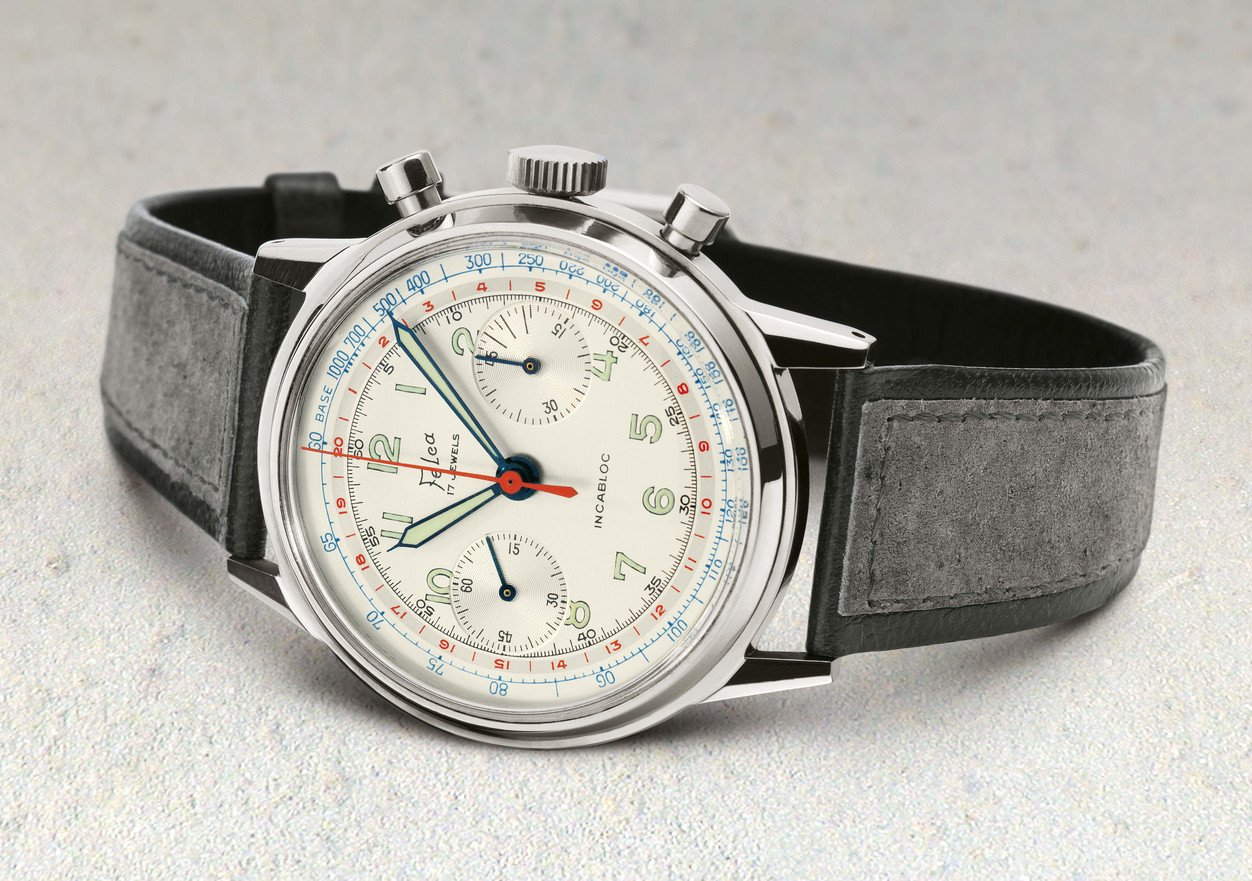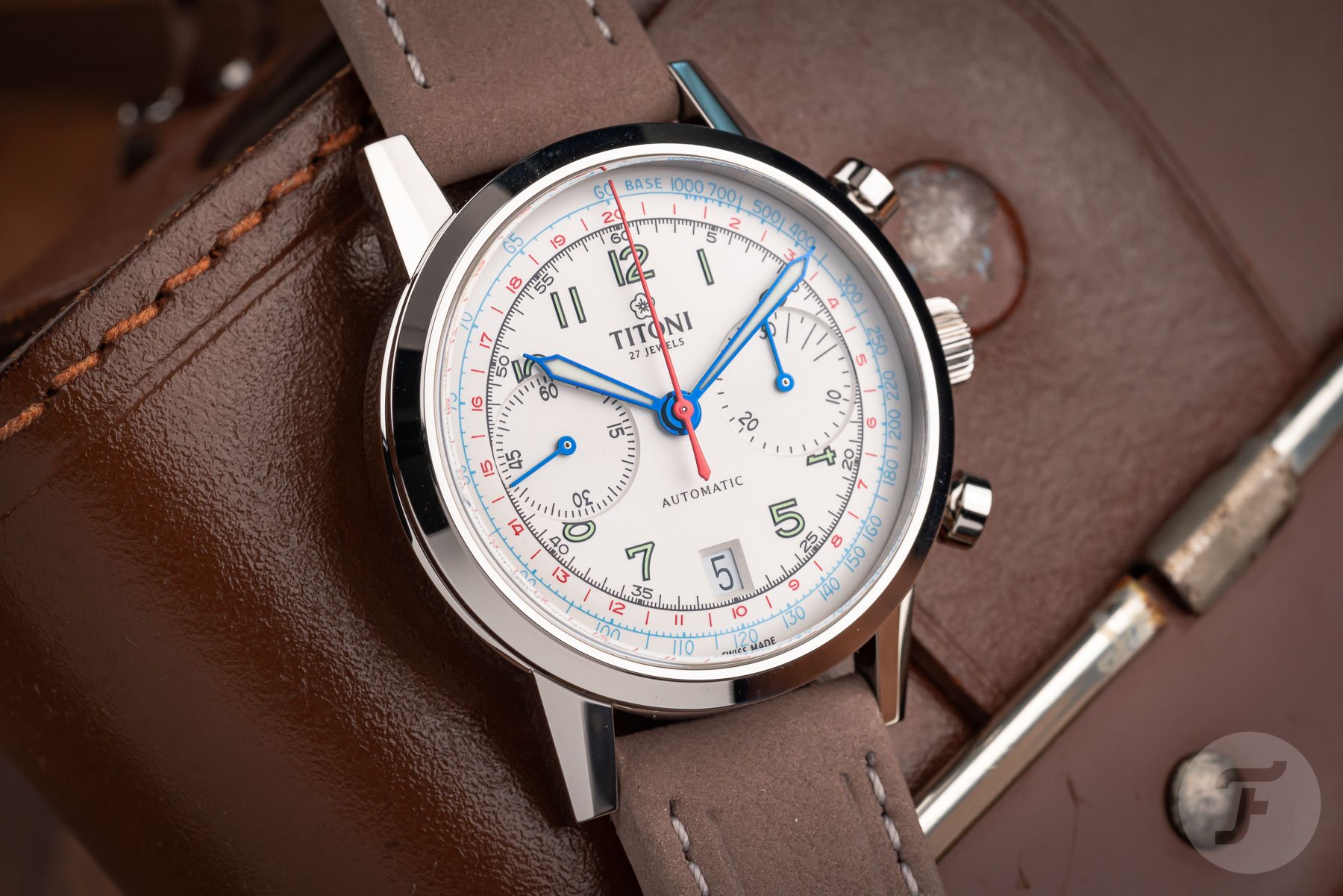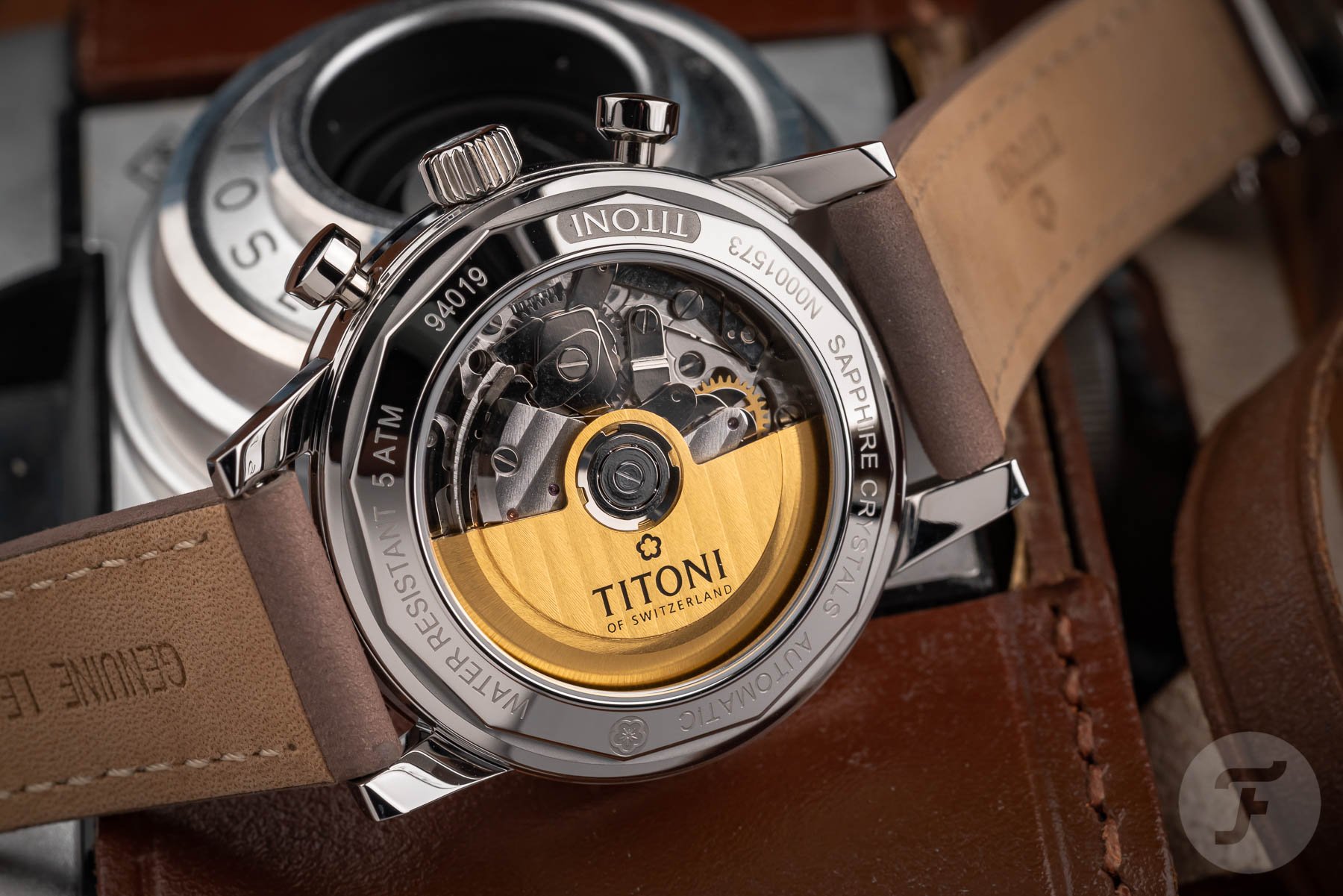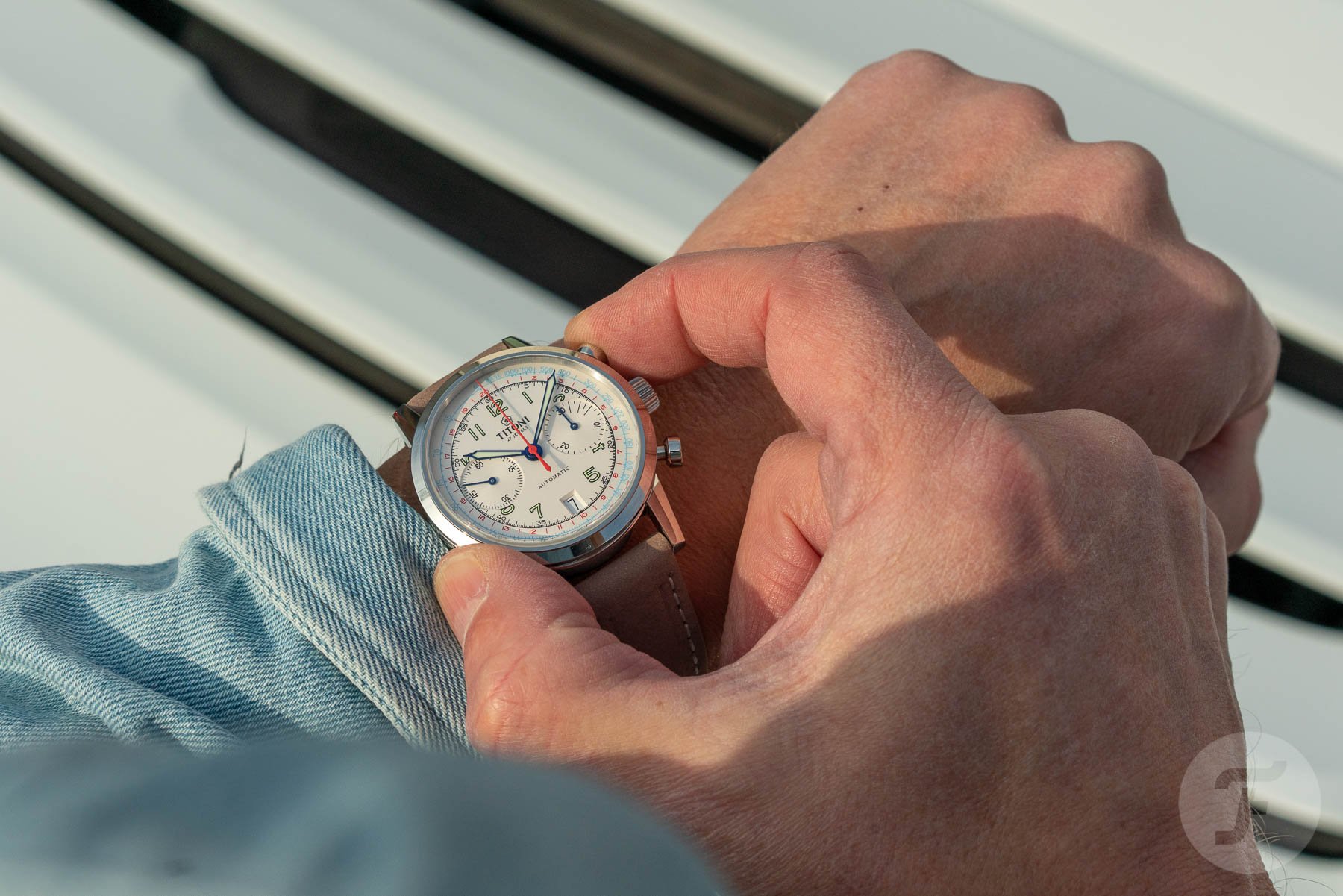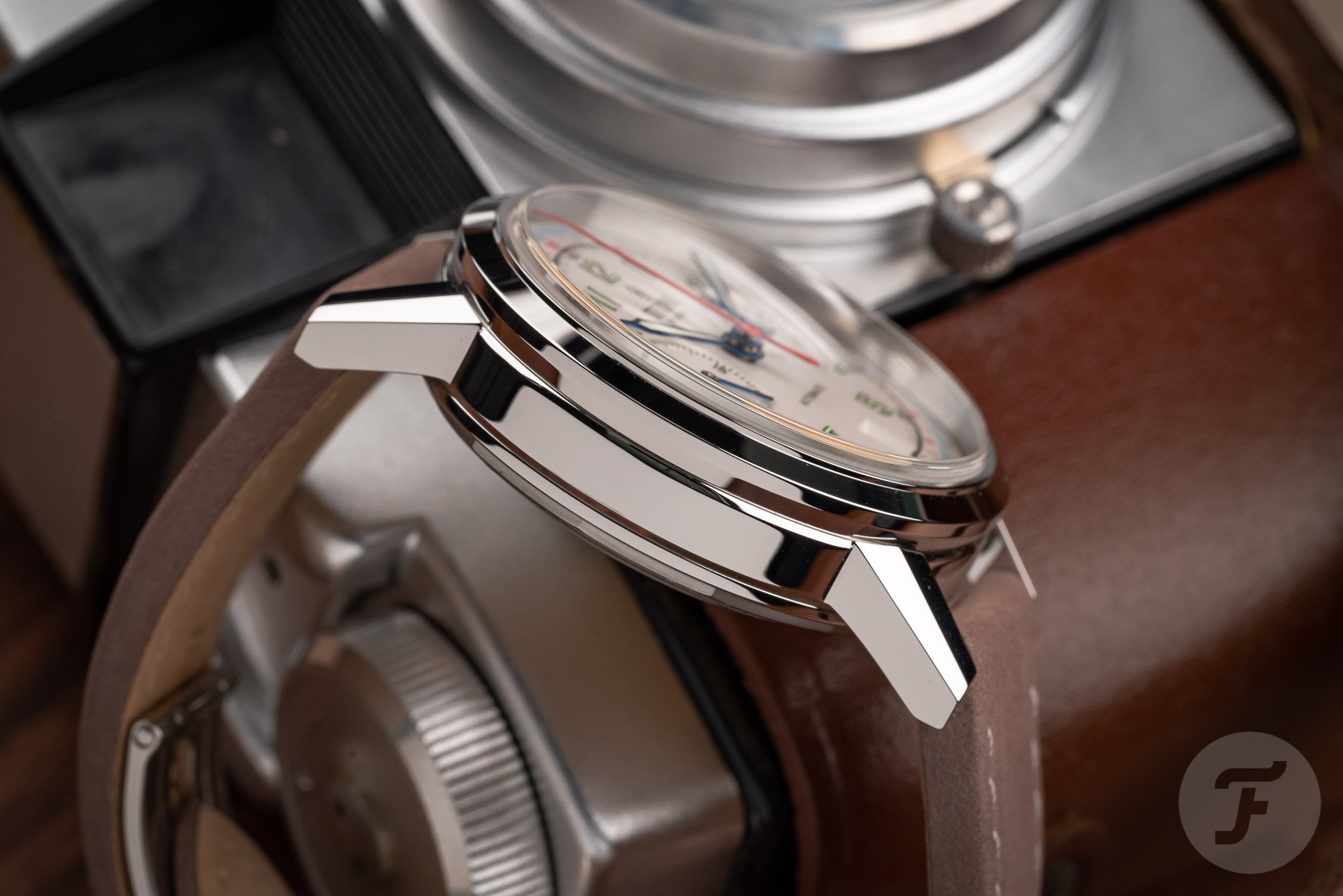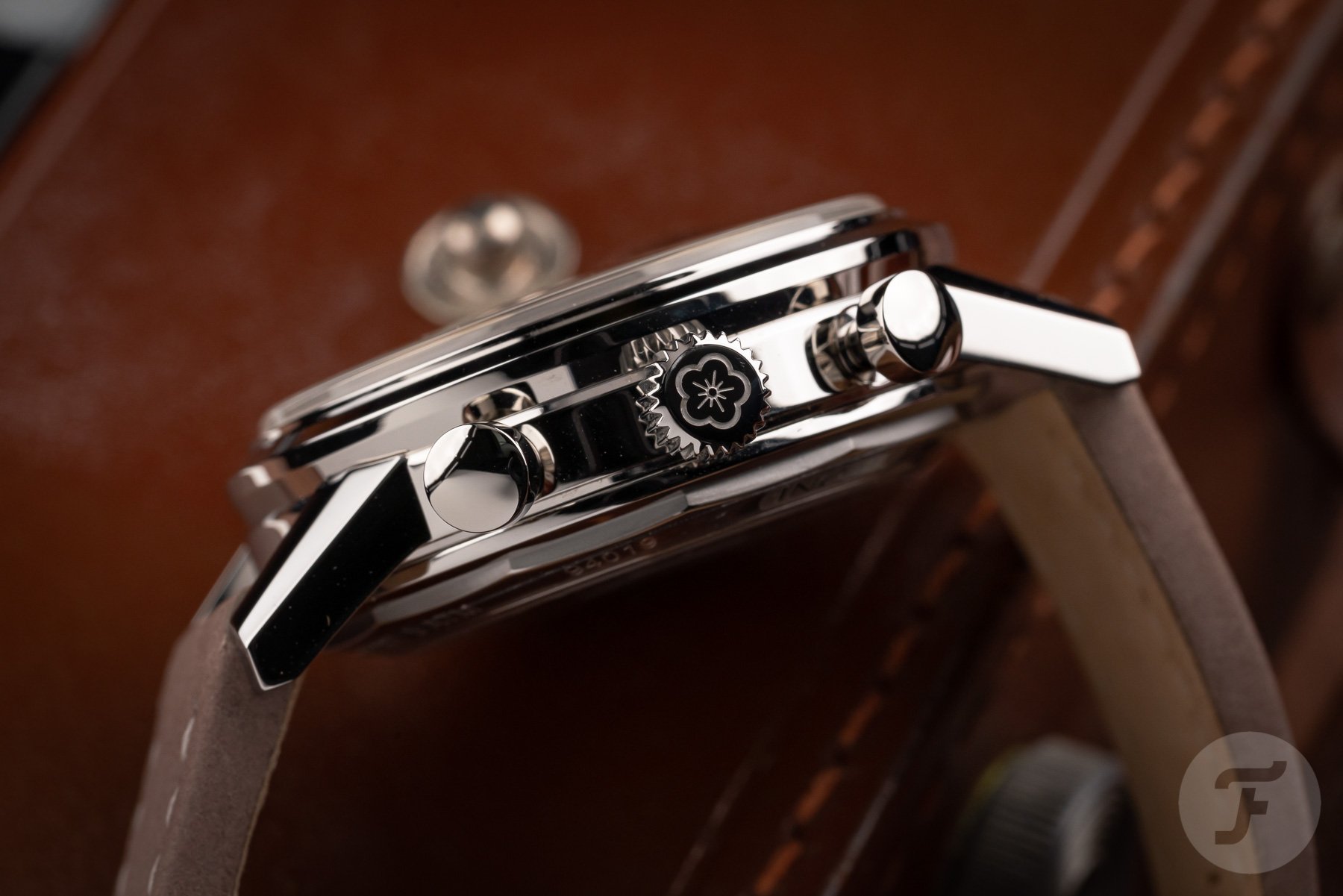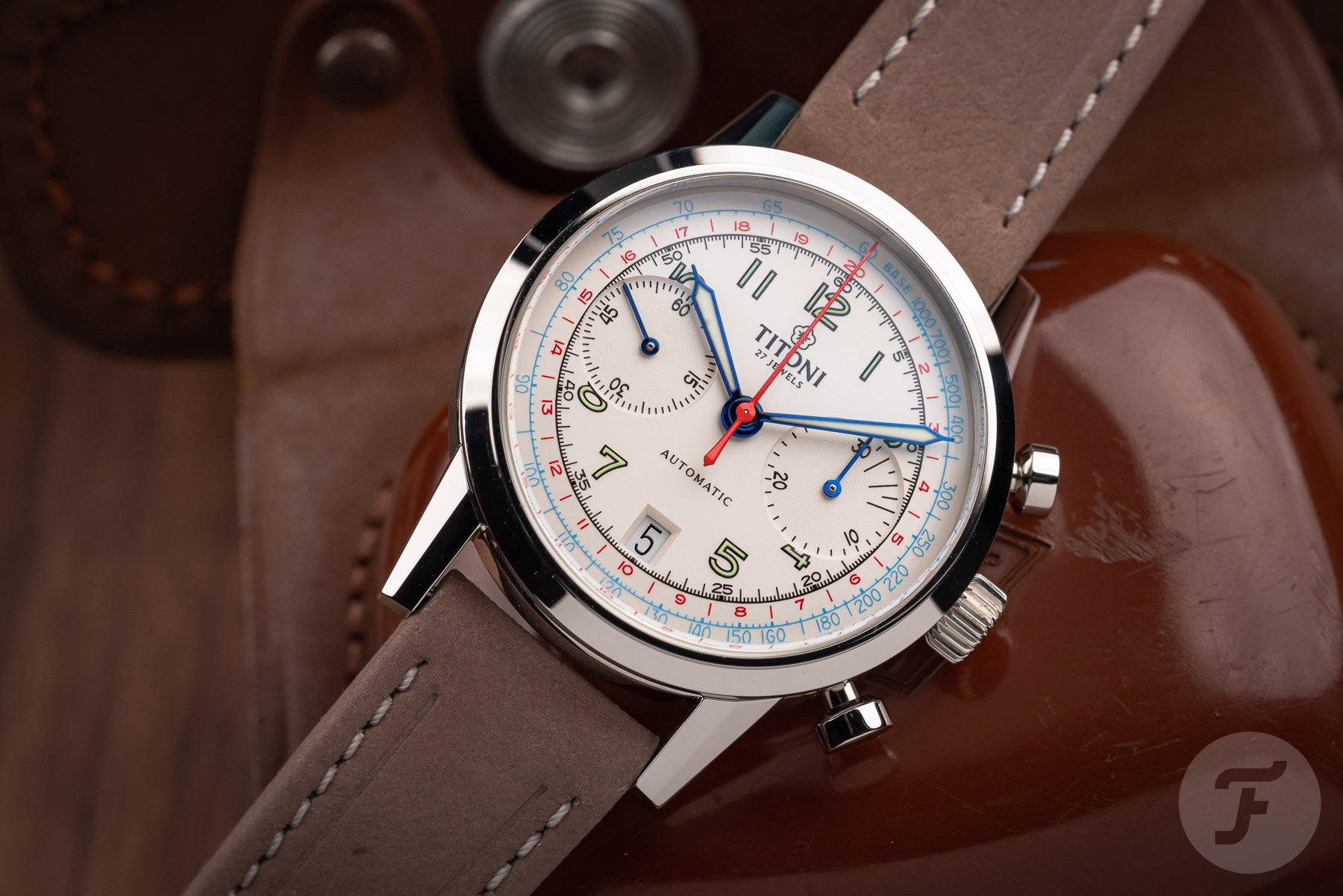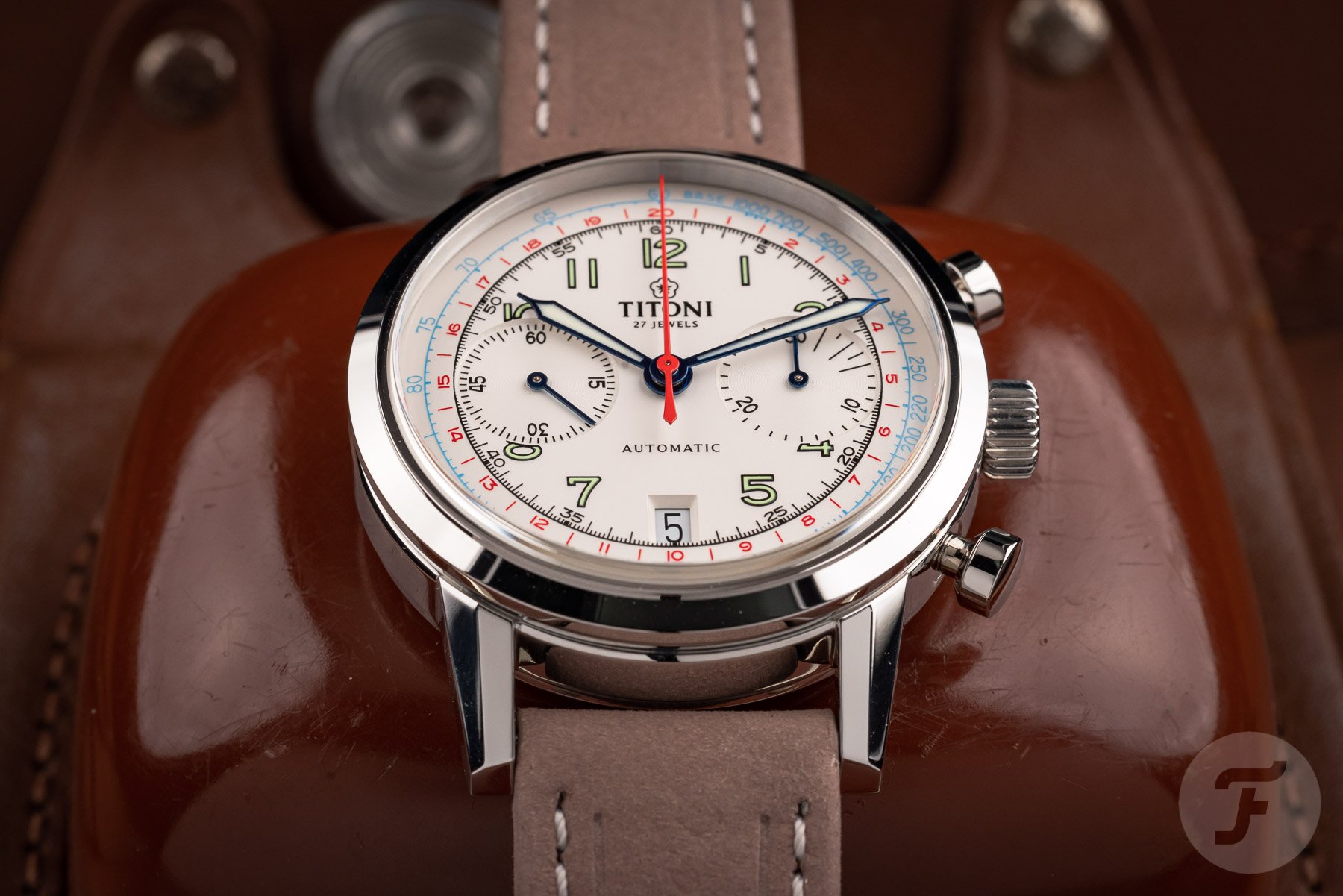Hands-On With The New, Retro-Styled Titoni Heritage Automatic Chronograph
The Titoni Heritage Automatic Chronograph isn’t a contender in The Fast And The Fratelli. But it well could have been, if only it had roared into HQ before the “Fratelli” prepped and tuned their favorite racing chronographs for the competition. A bit of a shame, since the Titoni ticks all the boxes. It has a tachymeter scale, it’s mechanical, and the combination of red and light blue numbers on an off-white dial is pretty awesome for sure. So, although the Heritage Automatic Chronograph won’t win the race, I still took it out for a “test drive”.
The Heritage Automatic Chronograph 94019 S-ST-682 is not the first model we’ve featured from Titoni’s history-inspired range. Rob wrote about the three-handed Heritage 83019 S-ST-638 before. What he explained is that the watch he reviewed is inspired by a 1948 model made by another brand, Felca, under the Titoni flag. And guess what? The retro-styled chronograph I have here today is also modelled after a Felca — a 1950s chronograph with a hand-wound Landeron Caliber 148. Landeron was famous at that time for producing some of the sturdiest affordable chronograph calibers. The movement is not as well-known as, say, a Venus 175 or a Valjoux 72 (Balazs can tell you all about iconic vintage chronograph calibers). Nevertheless, Caliber 148 was indeed widely used. Landeron started producing these movements in 1937. It ceased production of them in 1970, 33 years and 3.5 million movements later.
The retro-styled Titoni Heritage Automatic Chronograph has a modern “motor”
The revival of the 1950s Felca chronograph flies under the Titoni flag. They took the Felca flag down, so to speak, in 1981 when the brand was integrated into its mother company, Titoni. And as you would expect from a reinterpretation of a golden oldie, the old “motor” is replaced with something more up-to-date. In the case of this Heritage chrono, Titoni chose an automatic movement instead of a more historically accurate hand-winder. Inside the steel case, you find a Sellita SW510 BH, a Valjoux 7753 clone that beats at 4Hz (28,800 vibrations per hour). It uses an efficient uni-directional central winding rotor, resulting in 58 hours of power reserve.
I understand that automatic movements are more popular than manually wound ones. But if Titoni had opted for a hand-wound version of the Sellita SW500 caliber, it could have kept the height of the case down a bit more. The 41mm Heritage Automatic Chronograph has a case height of 15.2mm. That includes the domed, anti-reflective sapphire crystal and causes the watch to sit pretty high on the wrist. If it were just a tad slimmer, the old Felca would have had an even more worthy successor.
Viva nostalgia!
I say more worthy because the Titoni Heritage Automatic Chronograph is still worthy. And that’s because of the very charming, creamy white dial, the vintage sword hands that taper to a point with curved tips, and the specific Arabic numerals that characterize 1950s watches. Both the hands and numerals have a Super-LumiNova coating in “Old Radium” style — “fauxtina,” what else? Beige by day, and yellow-green by night.
I’m sure you’ve already noticed the nostalgic layout with two sub-dials. The small seconds hand sits at 9 o’clock, and the elapsed minutes register is found at 3 o’clock. The red telemeter and the blue tachymeter add historically accurate color to the dial. There’s also nothing wrong with the chronograph pushers in a good, old-fashioned pump style.
The ins and outs of wrist feel
So how does the Titoni Heritage Automatic Chronograph wear on the wrist? Well, it wears as you’d expect from a 41 × 15.2mm case. And apart from being quite high, it’s also very long. I measured a lug-to-lug length of 49mm. The beveled lugs are straight and point down sharply from the middle of the case.
Wrist feel doesn’t come from the height of the case. I think the balance between case diameter and lug-to-lug length is far more important.
When you look at the numbers, you might think the watch will sit oddly on the wrist. But it didn’t. Not on my wrist, anyway. Wrist feel doesn’t come from the height of the case. I think the balance between case diameter and lug-to-lug length is far more important. You don’t wear the height, unless you want to slide it under the cuff. You wear the shape and touchpoints of the case and the lugs. And since every wrist is shaped differently, the same watch will sit differently on different wrists. The Titoni agreed with mine.
Titoni Heritage Automatic Chronograph 94019 S-ST-682 — cruising towards the finish line
When I said, “you don’t wear the height,” I should have mentioned that when you’re dealing with a, let’s say, 15mm-high case, the lugs have to be positioned on exactly the right height of the case. If they sit too low, the watch becomes top-heavy. Titoni did a good job in positioning the lugs because the Heritage Automatic Chronograph 94019 S-ST-682 doesn’t feel top-heavy at all. It feels good.
I had to get used to the folding clasp, though. It sits quite high on the wrist, and the folding mechanism that clamps the sand-colored suede strap with subtly contrasting, creamy white stitching takes a bit of getting used to and time to adjust. But once I did find the exact right spot, I never felt the height of the clasp again. I also applaud Titoni for choosing this strap because it really elevates the look of the watch.
Titoni or Felca — which is right for the dial?
Allow me this sidestep. I remember lengthy discussions between journalists and people from Montblanc about logos and the use of the name “Minerva” on the dials of watches equipped with a movement from that manufacturer. To summarize, nostalgic purists and movement aficionados preferred the Minerva name on the dial. The modern-day marketeers and number-driven execs, on the other hand, wanted Montblanc on the dial. They were trying to sell Montblanc watches, not Minerva chronographs.
The use of the original Titoni logo is a respectful compromise.
The compromise was the use of an old-school Montblanc logo on the dial. Titoni kind of did the same thing here. The old name Felca is long gone, so why use it? And with all due respect, who remembers it? The use of the original Titoni logo is a respectful compromise.
Facing the competition
How much is this well-balanced compromise, you ask? The Titoni Heritage Automatic Chronograph 94019 S-ST-682 has a price of €2,200. That price means it has to battle it out with the likes of the Certina DS Chronograph Automatic and the Tissot Heritage 1948. Let’s not forget the Junghans Meister Telemeter Chronoscope, and the same goes for the Hamilton Intra-Matic Auto Chrono. And there are plenty more adversaries the Titoni has to outshine. But the Titoni stands a fair chance. The details are on point — I need to mention the nicely recessed sub-dials before it’s too late — and if the proportions and lug-to-lug length agree with your wrist, it’s a most pleasurable timepiece indeed.
Find out more about the Titoni Heritage Automatic Chronograph 94019 S-ST-682 on the brand’s official website.
Please find and follow me at Lex Stolk • Instagram

